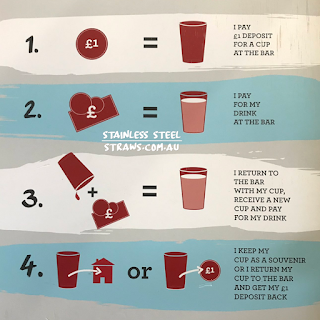"Cellophane let them choose food on the basis of how it looked, without sacrificing hygiene or freshness.
Here's why we advocate for reusable straws. Join us
#stainlessteelstraw #reusablestraw #metalstraw
One study - admittedly funded by DuPont - found that wrapping crackers in cellophane boosted sales by more than half.
And retailers had no shortage of similar advice. "She buys meat with her eyes," said a 1938 edition of The Progressive Grocer.
In fact, the meat counter was the hardest to make self-service. The problem was that meat, once cut, would quickly discolour.
But trials suggested a self-service meat counter could sell 30% more food.
With such an incentive, solutions were found: pink-tinted lighting, antioxidant additives and - of course - an improved version of cellophane, which let through just the right amount of oxygen.
Fizzy drinks come in polyethylene terephthalate.
And if you're not lost already, consider that plastic packaging is increasingly made from multiple layers of these and other substances, such as biaxially-oriented polypropylene or ethylene-vinyl acetate.
There's a reason for this, say packaging gurus - different materials have different properties, so multiple layers can give you the same performance from a thinner - and thus lighter - piece of packaging.
But these compound packaging materials are harder to recycle."
Choose reusables!
Source bbcnews
Here's why we advocate for reusable straws. Join us
#stainlessteelstraw #reusablestraw #metalstraw
One study - admittedly funded by DuPont - found that wrapping crackers in cellophane boosted sales by more than half.
And retailers had no shortage of similar advice. "She buys meat with her eyes," said a 1938 edition of The Progressive Grocer.
In fact, the meat counter was the hardest to make self-service. The problem was that meat, once cut, would quickly discolour.
But trials suggested a self-service meat counter could sell 30% more food.
With such an incentive, solutions were found: pink-tinted lighting, antioxidant additives and - of course - an improved version of cellophane, which let through just the right amount of oxygen.
Fizzy drinks come in polyethylene terephthalate.
And if you're not lost already, consider that plastic packaging is increasingly made from multiple layers of these and other substances, such as biaxially-oriented polypropylene or ethylene-vinyl acetate.
There's a reason for this, say packaging gurus - different materials have different properties, so multiple layers can give you the same performance from a thinner - and thus lighter - piece of packaging.
But these compound packaging materials are harder to recycle."
Choose reusables!
Source bbcnews




No comments:
Post a Comment